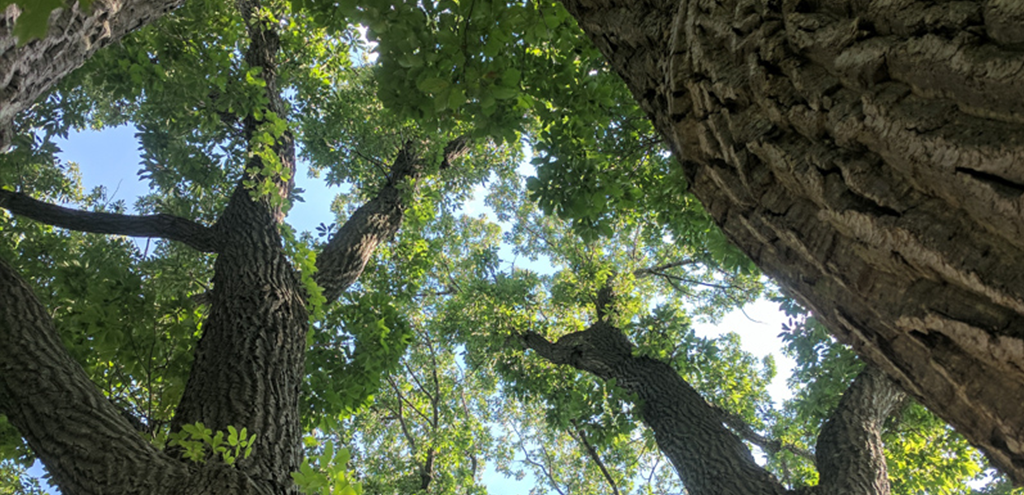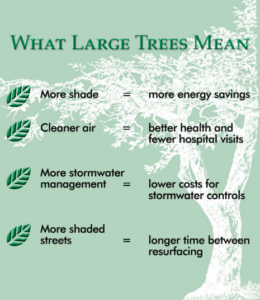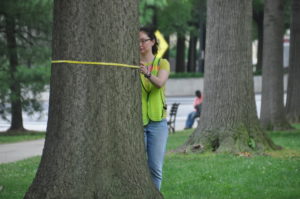THE LEAFLET

2020 Champion Tree Register
American Forests released its 2020 Champion Trees National Register, which is a compilation of America’s largest trees. The Champion Trees in the National Register are the biggest of their species in the country as reported to American Forests in the most current year. Anyone from anyplace can go to it to see the vast diversity of tree species across the country.

When it comes to trees, size matters. Courtesy Southern Center for Urban Forestry Research & Information Southern Research Station, USDA Forest Service.
One of the goals of the register is to inspire the preservation of these living monuments. Old, large trees are essential to creating healthy forests that can help slow climate change. It is no secret that large, mature trees provide unparalleled benefits. Compared to a small-stature tree, a strategically located large canopy tree has a bigger impact on conserving energy, mitigating an urban heat island, and cooling a parking lot. They do more to reduce stormwater runoff; extend the life of streets; improve local air, soil and water quality; reduce atmospheric carbon dioxide; provide wildlife habitat; increase property values; enhance the attractiveness of a community; and promote human health and well being. And when we plant large canopy trees, the bottom-line benefits are multiplied. When it comes to trees, size really does matter. If you’re considering adding a tree to your yard, we have almost 40 large canopy trees that we plant for free as part of our residential planting programs. We’ll work with you to find the right tree for your spot, so it doesn’t impede your foundation, power lines, or cause any other damage. With the right tree, you can have it all: shade, ecosystem benefits, and safety!

We inventory city trees (whether or not they’re champions!) to gather information so we can manage our community forest and prioritize tree maintenance needs.
Another thing the register highlights? The importance of inventorying trees – especially in a city! You cannot protect what you don’t know is there. We gather information on our urban forest by measuring, surveying, and identifying trees on public lands in DC through our Park Inventory Program. We use all this gathered information to manage our community forest and prioritize tree maintenance needs. We can’t protect our current trees and plan for new ones if we don’t know the health and make up of our current urban forest – all the data from community scientists also influence how our advocates fight for change.

DC’s Champion Chestnut Oak is the largest individual tree of its species in the country! Photo by John Maleri/Rock Creek Conservancy.
So take a look! You can either search the register to see Champion Trees by species or by state. DC has a Champion Chestnut Oak in Battery Kemble Park. It stands a whopping 105 feet in height and has a circumference of 276 inches (23 feet!), making it the largest tree of its species in the country. We’re truly surrounded by champions here – believe it or not our neighbor Virginia has the most Champion Trees of any state with 102 champs!
Article photo courtesy American Forests.